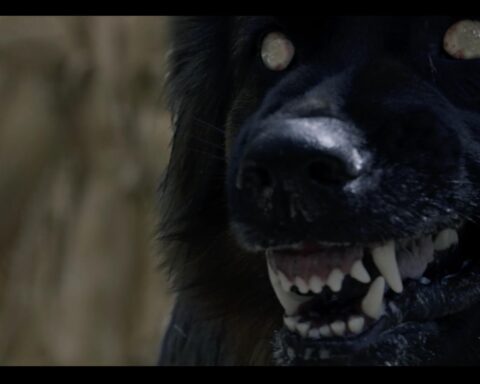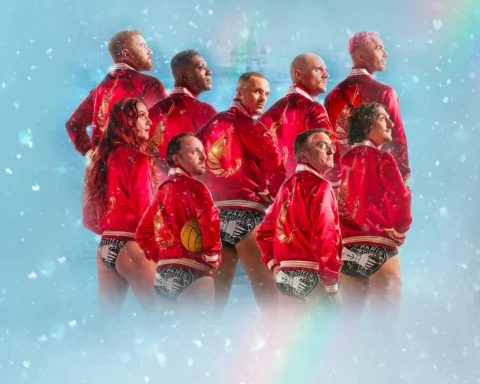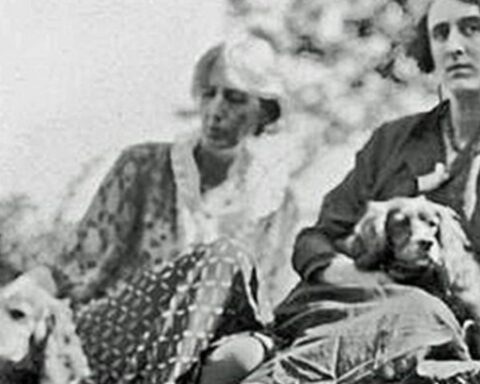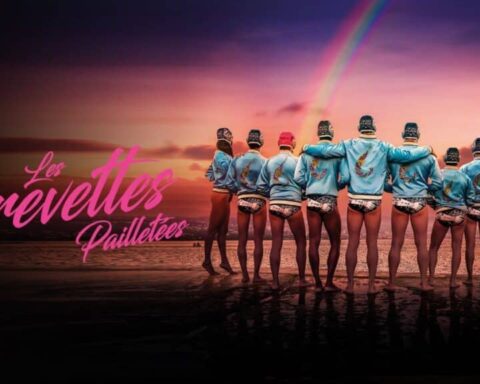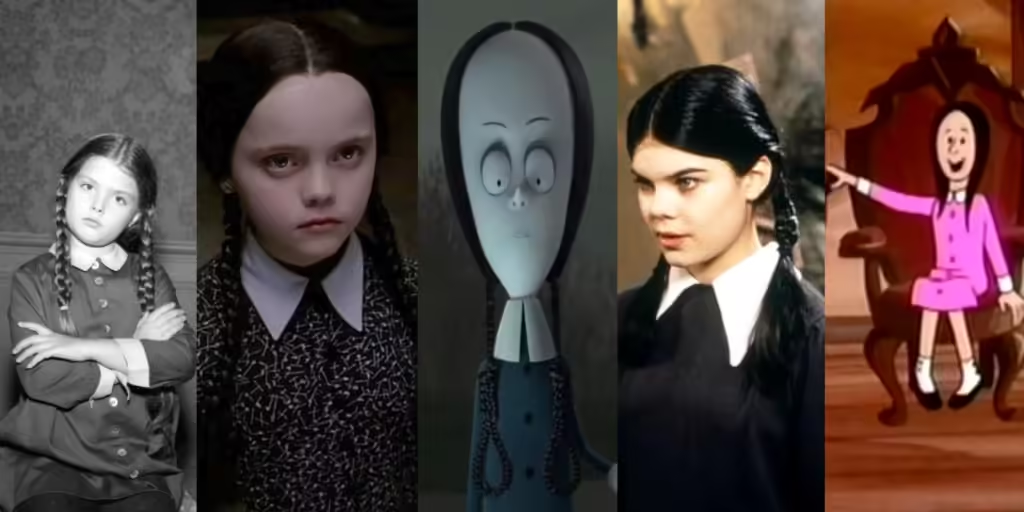In the vast, mythic field of American poetry, Emily Dickinson stands like a silent sentinel, a lone figure swathed in the white robes of her Amherst isolation. For generations, her work has been interpreted through the veil of her seclusion—an isolated genius, cloistered in her room, disconnected from the world outside, and untouched by the messy, effervescent realities of love and desire. Yet, Madeleine Olnek’s Wild Nights With Emily (2018) turns this story on its head, revealing not only a radically different portrait of Dickinson but also a deeply queer, fiercely passionate love story hidden beneath layers of patriarchal historiography.
This film offers more than just a historical revision; it’s a reclamation of Dickinson’s life and work from the male-centric gaze that has shaped her narrative for centuries. It is a bold act of queering history and a reminder that the very idea of Dickinson as the quiet, reclusive “spinster” is one of the great literary constructions of the 19th century. Through humor, poignancy, and a playful but biting critique of the literary establishment, Olnek presents an Emily Dickinson who was full of passion, humor, intelligence, and most importantly, love—particularly for her lifelong companion, Susan Gilbert.

The Importance of Queering Historical Narratives
Before diving into the film’s intricate portrait of Dickinson, it’s vital to understand why queerness matters in historical interpretation. To queer history is to expand the understanding of past lives, to offer interpretations that challenge heteronormative assumptions, and to explore desires and relationships that have often been erased, silenced, or minimized. The mainstream historical narrative has frequently marginalized or distorted queer stories, either through outright denial or more subtle methods like sanitizing language, motivations, and relationships. The simple act of acknowledging the fullness of a person’s relationships—especially in the context of queerness—can radically alter how we understand their achievements, joys, and sorrows.
For Emily Dickinson, the mainstream narrative has long depicted her as a woman untouched by earthly desires, her poetry existing in a world of intellectual abstraction far removed from human passion. However, Dickinson’s letters, particularly to her sister-in-law Susan, tell a different story. The letters are unabashedly intimate, emotional, and deeply erotic. The erasure or downplaying of Dickinson’s love for Susan is emblematic of a broader pattern of obscuring queerness in history. In Wild Nights With Emily, Olnek sets out to right this wrong by queering the historical record—not in a modern, anachronistic sense, but in a way that seeks to restore the authenticity of Dickinson’s own voice and experience.
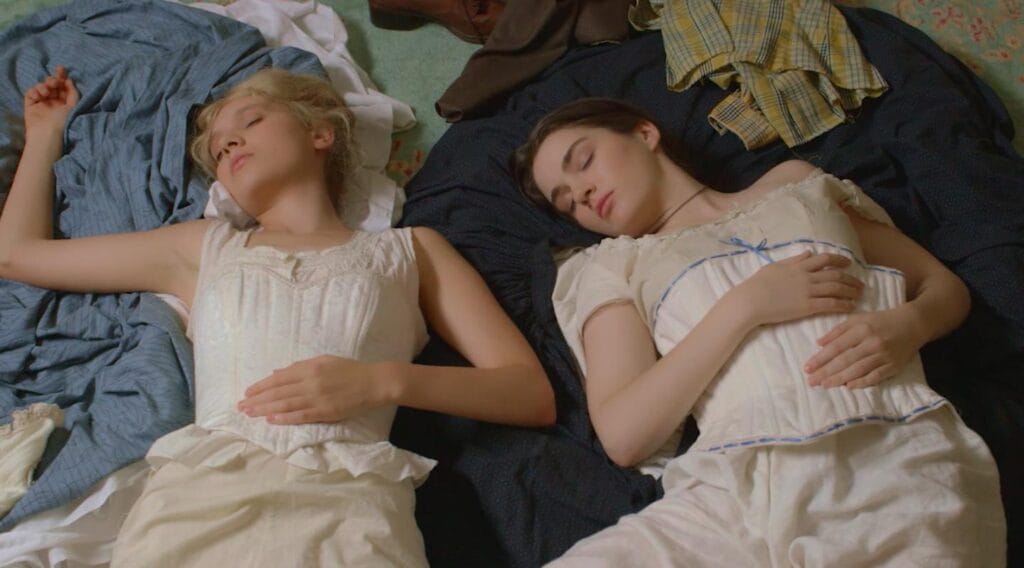
Emily and Susan: A Love Story Told in Poetry
Olnek’s film opens with Emily and Susan as young women, showing them lying in a field, holding hands, reading poetry to each other, and exchanging tender kisses. This image of Dickinson, so at odds with the stoic, sexless figure perpetuated by previous biographies, immediately sets the tone for the film. We are presented with a woman fully alive to the world around her, one whose passion flows freely into her poetry and whose relationship with Susan is not just a fleeting youthful romance but a lifelong bond.
This is crucial because Dickinson’s letters to Susan were often altered or destroyed by her family members and later editors, who were uncomfortable with the depth of their emotional and erotic content. By centering Susan as the great love of Dickinson’s life, Wild Nights With Emily challenges the notion that the poet’s work sprang from solitude and melancholy. Instead, it suggests that her greatest poems are expressions of love, desire, and intimacy—manifestations of a relationship that defied the conventions of its time.
One of the most poignant aspects of the film is how it illustrates the interplay between Dickinson’s life and her art. Susan was not only Dickinson’s lover but also her intellectual companion and muse. The scenes of Emily reading her poems to Susan, the quiet intensity of their shared intellectual life, give new depth to lines like “Wild nights – Wild nights! / Were I with thee / Wild nights should be / Our luxury!” In Olnek’s interpretation, these words are not abstract musings but the direct expression of Dickinson’s longing for Susan.
This interpretation is bolstered by the historical record, even if it has often been neglected. Dickinson’s poems are suffused with the language of desire and intimacy, but traditional critics have often chosen to interpret them through the lens of religious devotion or unrequited love for male figures, despite the absence of clear evidence supporting such conclusions. Wild Nights With Emily gives voice to the interpretation that much of Dickinson’s passion was directed toward Susan, and it does so with a mix of irreverent humor and heartfelt sincerity that mirrors the poet’s own work.
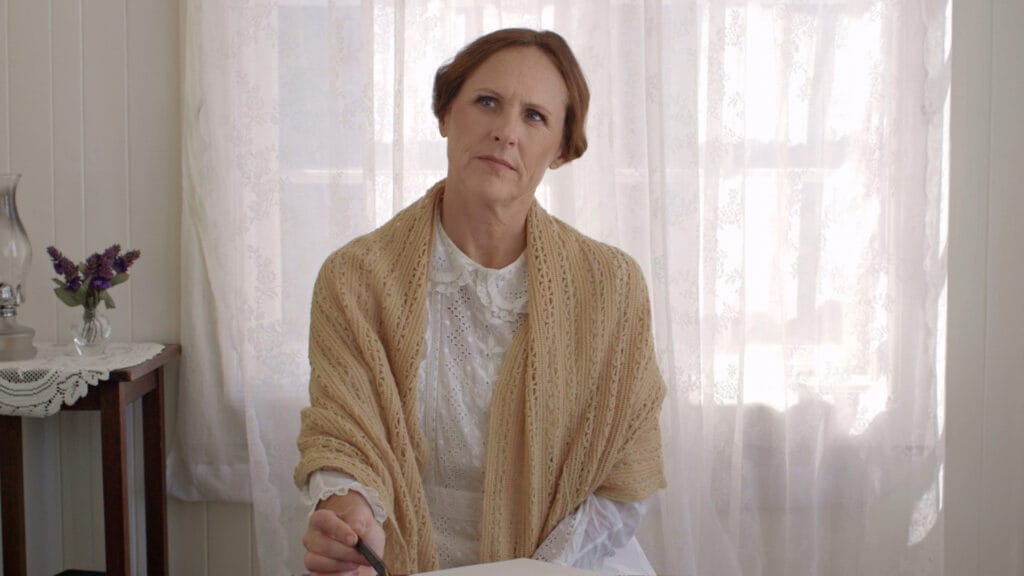
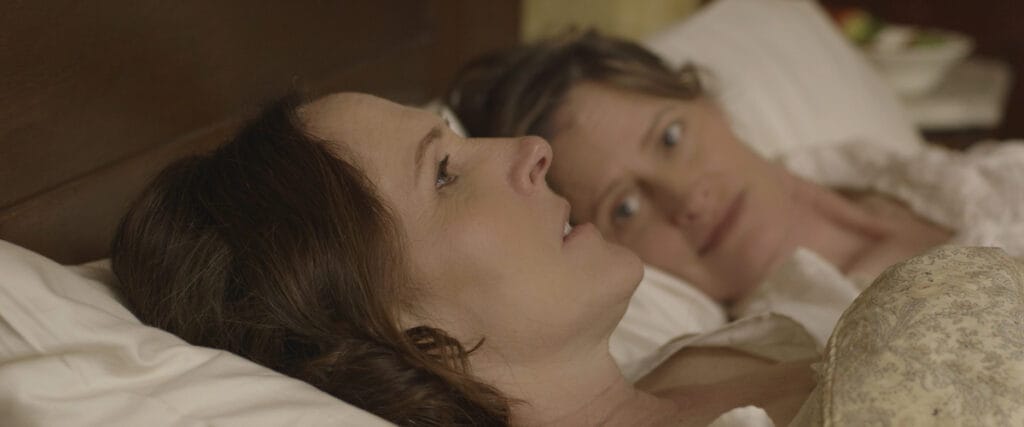


Humor and Subversion: Challenging the Literary Patriarchy
Olnek’s film is not merely a romantic drama; it is also a satire of the literary establishment that has shaped Dickinson’s legacy. One of the film’s central antagonists is Mabel Loomis Todd, the woman responsible for editing and publishing many of Dickinson’s poems after her death. In the film, Todd is portrayed as both comically self-serving and deeply influential in the construction of the “official” version of Dickinson—one that carefully omits any hint of queerness or passion.
Through a series of scenes that oscillate between humor and frustration, Olnek shows how Todd’s version of Dickinson became the dominant narrative. Todd’s editorial choices—such as removing names, altering pronouns, and inserting dashes where Dickinson had none—were part of a broader project of desexualizing the poet and rendering her more palatable to a conservative, patriarchal readership. The film’s portrayal of Todd’s self-righteousness and her unrequited romantic obsession with Dickinson’s brother Austin further underscores the absurdity of her role as gatekeeper of Dickinson’s legacy.
Olnek’s use of humor serves as a tool of resistance and reclamation. By poking fun at the pomposity of the literary elite, the film exposes the arbitrary and often self-serving nature of literary canonization. In one particularly biting scene, Todd delivers a lecture to a crowd of admirers about Dickinson’s supposed isolation, using the poet’s reclusiveness as proof of her purity and distance from worldly desires. Meanwhile, the audience is shown scenes of Dickinson passionately embracing Susan, her poetry intertwined with the love that Todd works so hard to erase.
This interplay between humor and critique is central to the film’s project. Olnek is not merely making a biographical correction; she is pointing out how the narratives that surround literary figures are constructed, manipulated, and policed. The film asks us to question not only what we know about Dickinson but also how we know it. Why has the image of Dickinson as a lonely, loveless figure persisted for so long? What forces were at play in shaping her posthumous reputation, and who stood to gain from portraying her in this way?
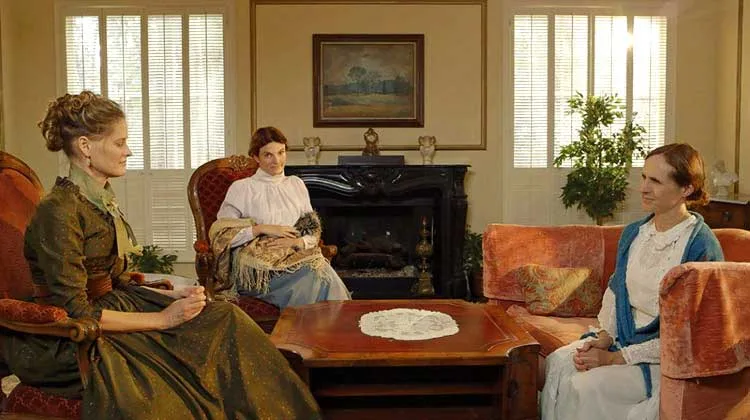
Queerness as Central to the Poetic Tradition
While Olnek’s film is specifically about Dickinson, it also taps into broader questions about the place of queerness in literary history. For too long, queer voices and relationships have been marginalized or erased from the official record. This erasure is not just a matter of personal injustice but also an artistic one. When we ignore the queerness of poets like Dickinson, we limit our understanding of their work and its richness. We reduce their poetry to abstractions rather than reading it as a reflection of real, embodied experiences of love, desire, and longing.
One of the great triumphs of Wild Nights With Emily is how it reclaims queerness as central to Dickinson’s poetic vision. By centering her relationship with Susan, the film suggests that Dickinson’s poetry is not just about the intellectual exercise of crafting beautiful language. It is about connection, desire, and the refusal to be confined by societal norms. In Dickinson’s time, queerness was not something that could be openly acknowledged or celebrated. Yet through her poetry, Dickinson found a way to express the inexpressible, to articulate feelings that defied the boundaries imposed by society.
In many ways, Dickinson’s poetry itself is a form of queerness—an act of defiance against the rigid expectations of her time. Her use of unconventional punctuation, fragmented syntax, and elliptical phrasing mirrors the experience of queerness: the sense of being outside the mainstream, of navigating a world that does not fully understand or accept you, and yet finding beauty and meaning in that outsider status. Dickinson’s poems are full of paradoxes, ambiguities, and contradictions, reflecting the complexity of her inner life and her relationship with Susan.
Olnek’s film underscores this by showing how Dickinson’s queerness is not just an incidental detail of her life but a central aspect of her identity as a poet. Her love for Susan is not a footnote in the history of American literature; it is the very heart of her creative genius. In reclaiming this aspect of Dickinson’s life, Wild Nights With Emily also invites us to reconsider the role of queerness in the broader literary tradition. How many other poets, writers, and artists have had their queerness erased or minimized? What would happen if we embraced a more inclusive, expansive view of literary history—one that recognizes the centrality of queer love and desire?
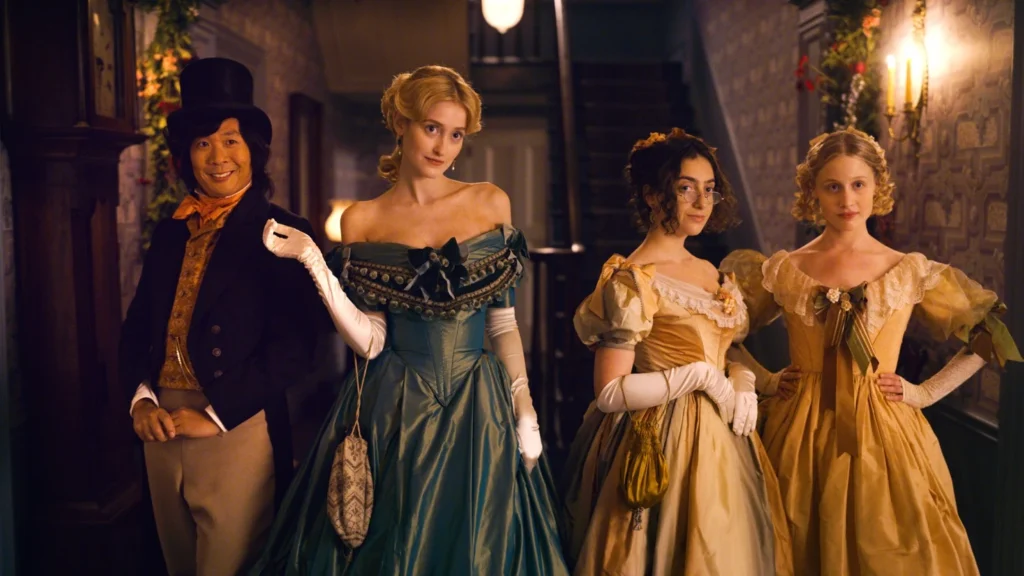
The Politics of Visibility: Why This Film Matters
In a world where queer stories are still often marginalized, the importance of Wild Nights With Emily cannot be overstated. The film does more than offer a corrective to the historical record; it serves as a powerful reminder of the politics of visibility. To see Dickinson portrayed as a queer woman, to see her love for Susan depicted with tenderness and respect, is an act of cultural resistance. It is a rejection of the erasure that so many queer figures have faced throughout history.
Moreover, the film’s humor and irreverence make it accessible to a wide audience, allowing viewers to engage with these questions in a way that feels fresh and dynamic rather than didactic. Wild Nights With Emily is not just a film for literary scholars or Dickinson enthusiasts; it is a film for anyone who cares about the complexities of love, identity, and artistic creation.
In today’s cultural landscape, where the rights of LGBTQ+ people are still being contested and where queer stories are often sanitized or sidelined, a film like Wild Nights With Emily serves as a beacon of hope. It reminds us that queer love is not a modern invention but has been a part of the human experience for centuries. It shows us that queer people have always found ways to express their desires, even in times of repression, and that their contributions to art, culture, and society are immeasurable.
Rewriting the Past, Shaping the Future
Wild Nights With Emily is more than just a film about Emily Dickinson. It is a meditation on the power of love, the importance of visibility, and the necessity of queering history. By reclaiming Dickinson’s queerness, Olnek opens up new possibilities for understanding not only the poet herself but also the broader literary tradition. She reminds us that the stories we tell about the past are never neutral—they are shaped by the values, assumptions, and prejudices of those who tell them.
In this sense, Wild Nights With Emily is not just a film; it is an intervention. It challenges us to question the narratives we have inherited, to seek out the voices that have been silenced, and to celebrate the full spectrum of human experience. By queering the story of Emily Dickinson, Olnek has not only done justice to one of America’s greatest poets; she has also made a profound statement about the transformative power of love and the enduring importance of queer visibility in art and life.
In the end, Wild Nights With Emily is not just about reclaiming the past; it is about shaping the future. By bringing Dickinson’s queerness to the forefront, the film invites us to imagine a world where all love stories, all lives, are given the respect and recognition they deserve—a world where the richness of queer experience is not hidden away but celebrated in all its complexity and beauty. And in doing so, it offers us a vision of what history—and the future—could be if we are brave enough to embrace it.

